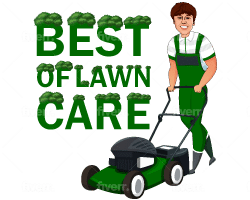23July 2023
Regular lawn maintenance is essential for keeping your outdoor space healthy and beautiful. A well-maintained lawn not only looks great but also provides numerous benefits that make it worth the investment. In this blog post, we will discuss why regular lawn maintenance is important and cover topics such as mowing, fertilization, controlling weeds, aeration, and irrigation tips to keep your grass green.
Introduction to Regular Lawn Maintenance
Regular lawn maintenance involves a series of practices designed to keep your lawn healthy and attractive. These include mowing, fertilizing, watering, and controlling pests and diseases. By following these practices regularly, you can prevent problems before they occur and ensure that your lawn remains lush and vibrant throughout the year.
The Importance of Mowing Your Lawn
Mowing is one of the most critical aspects of regular lawn maintenance. It helps to maintain the height of your grass and promote growth by removing dead or damaged plant material. Additionally, mowing allows sunlight to reach the lower layers of your lawn, which encourages root development and improves overall health. To achieve optimal results, experts recommend mowing your lawn every two weeks during peak growing season and adjusting the blade height based on the type of grass in your yard.
Why Fertilization is Crucial for a Healthy Lawn
Fertilizer plays an essential role in promoting healthy lawn growth by providing nutrients that are vital for plant development. The right fertilizer should contain nitrogen, phosphorus, and potassium (NPK) in balanced proportions to support strong roots, stems, and leaves. Applying fertilizer twice per year, once in spring and again in fall, can help to boost your lawn’s immune system and improve its resistance to disease and pest infestations.

Controlling Weeds in Your Outdoor Space
Weed control is another crucial aspect of regular lawn maintenance. Weeds compete with desirable plants for nutrients and sunlight, which can lead to thinning and weakening of your turf. To control weeds effectively, experts recommend using pre-emergent herbicides to prevent them from germinating and post-emergent herbicides to kill existing weeds. You can also use mechanical methods like hand pulling or tilling to remove weeds manually.
Aeration and Its Benefits for Your Lawn
Aeration is the process of creating small holes in your lawn to allow air, moisture, and nutrients to penetrate into the soil. This practice can benefit your lawn by reducing soil compaction, improving drainage, and enhancing root growth. Experts recommend aerating your lawn annually, preferably in late summer or early fall when the soil is soft and easy to work with.
Irrigation Tips for Keeping Your Grass Green
Proper irrigation is essential for keeping your lawn healthy and green. Here are some tips to help you get started:
1. Water deeply and less frequently – shallow watering can encourage shallow root systems and increase the risk of drought stress.
2. Adjust your sprinklers to avoid overwatering areas where runoff occurs.
3. Use a rain sensor to turn off automatic sprinklers during rainy periods.
4. Consider installing a smart irrigation controller that uses weather data to adjust watering schedules automatically.
In conclusion, regular lawn maintenance is essential for keeping your outdoor space healthy and beautiful. By incorporating best practices like mowing, fertilization, weed control, aeration, and proper irrigation, you can create a thriving ecosystem that enhances the curb appeal of your home while providing numerous environmental benefits.

